9.Exercise therapy for lymphedema
Exercise is generally introduced for the purpose to alleviate edema. Exercise can maintain the range of joint movement and improve the volume of muscle strength/activity, leading to improved quality of life. It is important that patients live with the lymph system actively moving in daily life. Breathing, joint exercise, and aerobic exercise are thought to activate the lymph system.
Muscle-strengthening exercise uses muscle pumping and increases lymph flow. Muscle pumping induces reflux of vein blood and lymph fluid in an affected extremity by constriction and relaxation of the skeletal muscle. Increased intra-abdominal pressure by abdominal breathing can promote lymph flow of the abdomen (thoracic duct pumping).
When an affected extremity is compressed with elastic clothing in exercise, an effect to promote the lymph system by muscle pumping is thought to be increased. Elastic clothing becomes a firm barrier, and muscle exercise induces high moving pressure/resting pressure, resulting in high effect.
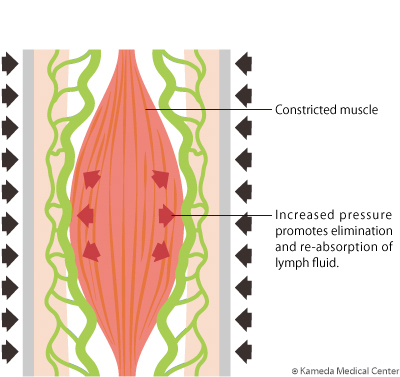
Resting pressure: When an affected extremity rests, dressing or elastic clothing applies constant pressure on the skin.
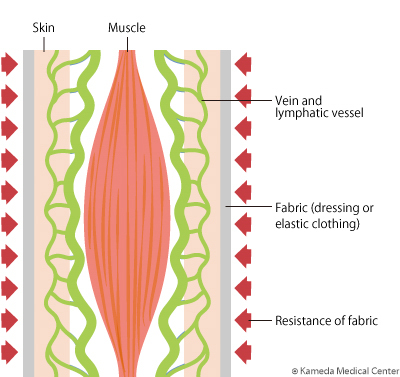
Moving pressure: When muscle constricts and distends (on exercise), pressure inside an affected extremity temporally increases because muscle presses against renitent dressing.
Exercise therapy after surgery of breast cancer
Because of pain or anxiety after surgery of breast cancer, patients may lose opportunity to move an affected extremity. However, if patients continue to avoid moving the extremity, the range of shoulder joint movement may narrow, or pain may occur.
Expanding the range of movement after surgery of breast cancer is important to maintain patients' daily life, hobby, and quality of life.
With introduction of sentinel node biopsy (SNB), although the onset of dysfunction of upper extremities has decreased, the incidence is reported to be 66% and 36% in the group with axillary removal and in the group with SNB, respectively. Dysfunction of upper extremities is reported as follows: decreased range of shoulder joint movement (1% to 67%), decreased muscle strength of the arm (9% to 28%), pain of the shoulder/arm (9% to 68%), lymphedema (0 to 34%). In our hospital, rehabilitation is started on Day 3 after surgery. It is said that exercise program started immediately after surgery significantly improves the range of shoulder joint movement in postoperative short term. Rehabilitation during hospitalization is limited. Steady self-training after discharge is important. It is recommended to move an affected extremity as far as pain does not occur, and to gradually widen the range of movement.
Warm-up exercise to improve lymph flow
Rolling the shoulder back
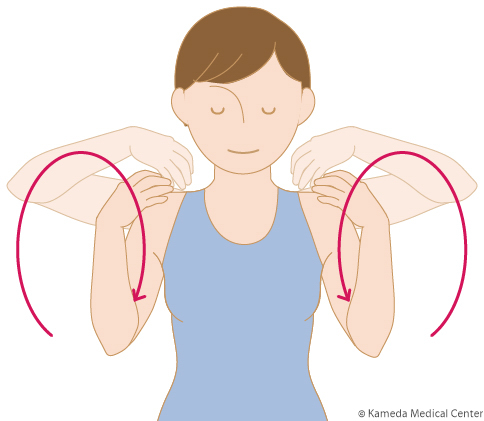
Abdominal breathing
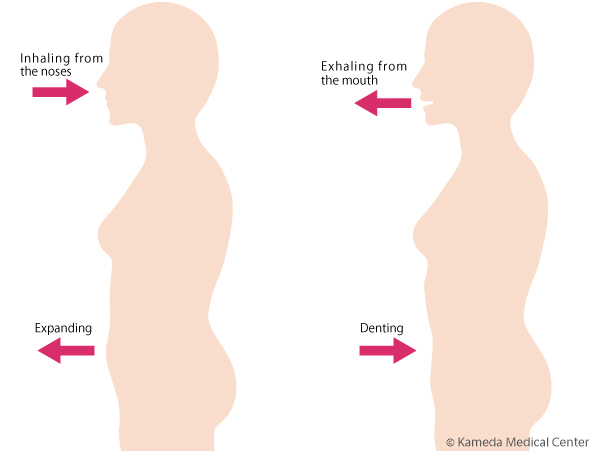
Exercise for the range of shoulder joint movement
- Holding a bar with both hands, raise it with arms stretching.
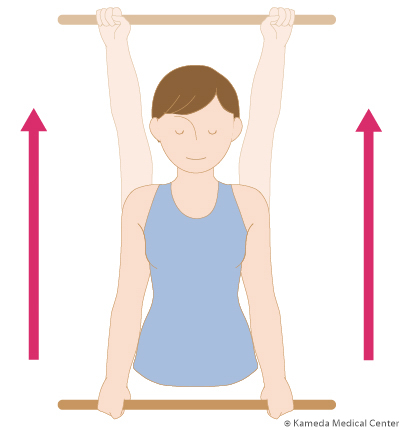
- Holding both ends of a bar, raise it to the direction in which you feel pain.
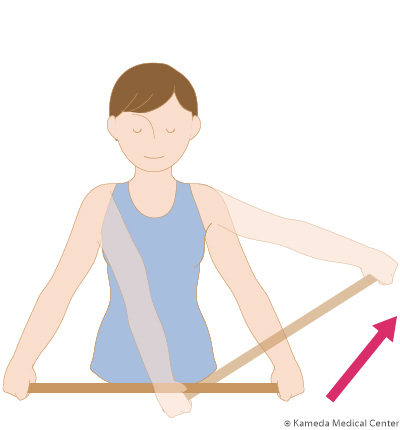
Stretch using a wall
Exercise of the shoulder joint strengths muscle and improves the range of movement, leading to re-starting of hobby or improvement of quality of life. Combination with exercise therapy such as aerobic exercise will result in prevention of lymphedema by muscle strength or decreased fat. It is important to continue exercise at a comfortable level.
Reference
- Procedure and care of lymphedema for nurse/physical therapist
- Best practice to manage lymphedema